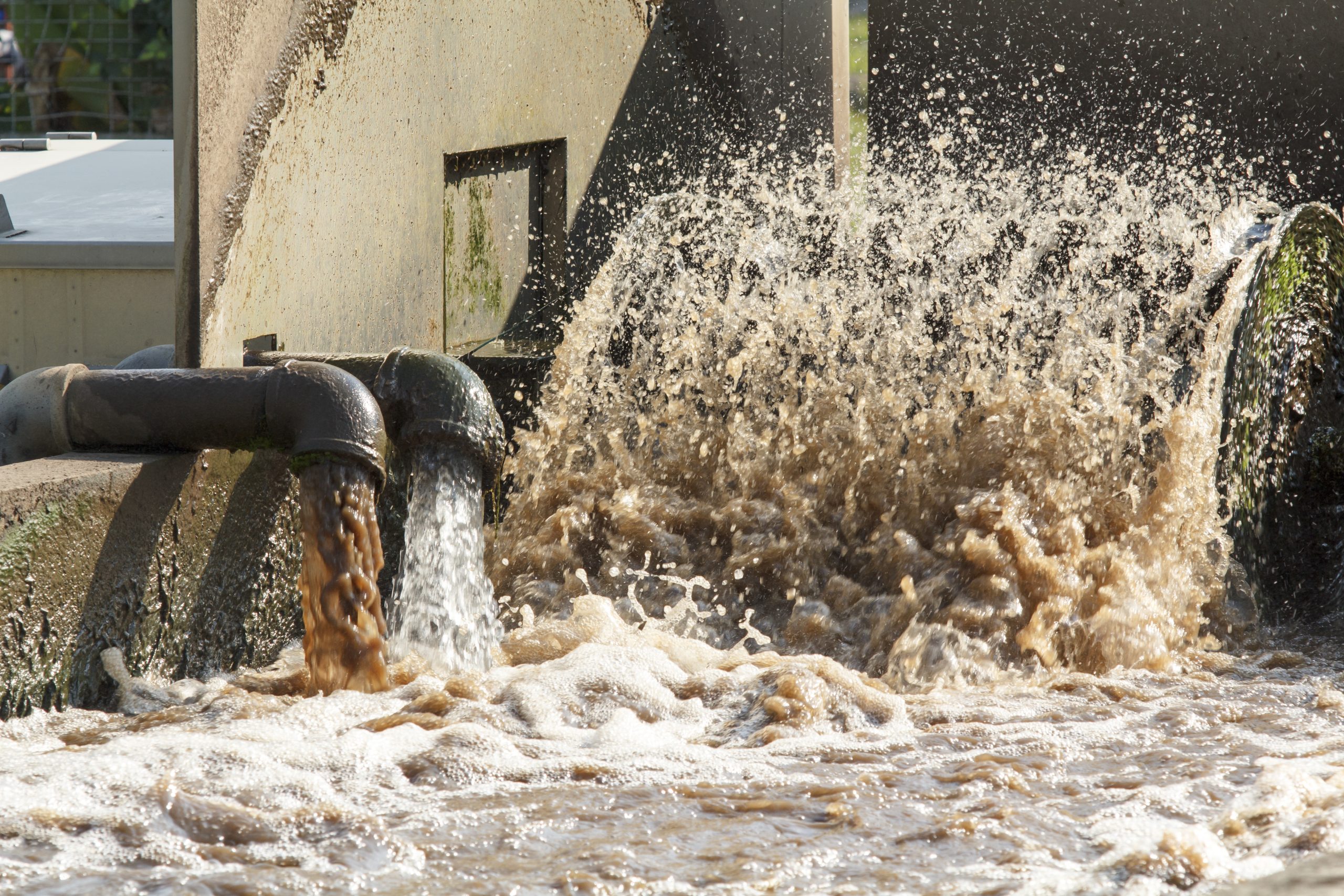Trick Methods in Hazardous Waste Water Therapy Processes
The treatment of commercial wastewater is an important facet of environmental monitoring, involving a range of techniques made to mitigate the impact of contaminants. Improvements in modern technologies such as membrane layer filtration and advanced oxidation procedures use ingenious options for boosting treatment effectiveness.
Physical Treatment Methods
Just how properly can physical treatment approaches deal with the complexities of industrial wastewater? Physical treatment techniques play a pivotal duty in the initial phases of wastewater monitoring, concentrating largely on the removal of solids and large particulates. Methods such as flotation, sedimentation, and purification are necessary for reducing the concentration of suspended solids, consequently enhancing the effectiveness of subsequent therapy procedures.
Sedimentation includes the gravitational settling of solids, allowing for the splitting up of larger materials from the wastewater. This approach is especially efficient in clearing up water prior to chemical or organic treatments.
Furthermore, flotation methods, which make use of air bubbles to lift put on hold solids to the surface area for removal, work in dealing with wastewater with high concentrations of fats, oils, and oils. Overall, physical therapy methods act as a vital primary step in the detailed management of industrial wastewater, making certain that the load on succeeding treatment stages is lessened and enhancing overall therapy efficacy.
Chemical Treatment Strategies
While physical treatment techniques prepared for efficient wastewater administration, chemical treatment methods are vital for dealing with the a lot more intricate impurities often found in commercial effluents. These approaches use numerous chemical representatives to speed up, reduce the effects of, or oxidize unsafe compounds, making certain a more complete removal of toxins.
One usual approach is coagulation and flocculation, where chemical coagulants such as aluminum sulfate or ferric chloride are contributed to promote the gathering of put on hold fragments. This process enhances solid-liquid splitting up, lowering turbidity and enhancing water high quality. Furthermore, neutralization processes are utilized to readjust the pH of wastewater, using acids or bases to counteract acidic or alkaline streams, respectively.
Oxidation-reduction reactions play a vital role in degrading organic pollutants and microorganisms. Chemical oxidants like hydrogen, ozone, or chlorine peroxide are used to damage down complex organic substances, making them much less hazardous or extra eco-friendly. Progressed oxidation procedures (AOPs) integrate several oxidation methods to boost pollutant elimination efficiency.
Biological Therapy Processes
The performance of wastewater therapy is considerably improved by biological therapy procedures, which harness the all-natural metabolic tasks of microbes to disintegrate natural matter and eliminate pollutants. Industrial Waste Water Treatment. These processes mostly involve cardio and anaerobic food digestion, each customized for particular kinds of wastewater
Aerobic treatment procedures make use of oxygen to support microbial development, advertising the failure of organic contaminants into co2 and water. Common techniques include turned on sludge systems, where oygenation storage tanks assist in the mixing of wastewater with microbes, and flowing filters, which motivate biofilm development on media surfaces.
Conversely, anaerobic therapy procedures take place in the lack of oxygen, utilizing anaerobic bacteria to break down organic issue, causing biogas production, a sustainable power source. Anaerobic digesters are commonly employed in commercial settings for this function, effectively lowering the quantity of sludge while generating useful biogas.
The selection of a biological therapy approach depends directory upon wastewater attributes, treatment goals, and regulative standards. The integration of biological processes in wastewater therapy not only boosts toxin removal performance but additionally promotes sustainability by minimizing chemical usage and supporting resource healing.
Advanced Oxidation Processes

Typical AOP techniques consist of Fenton's ozonation, reagent, and photocatalysis. Fenton's reagent, a combination of hydrogen peroxide and ferrous iron, militarizes the development of hydroxyl radicals, making it effective for treating wastewater including phenolic compounds and various other stubborn compounds. Ozonation uses ozone as an effective oxidant, capable of deteriorating a vast array of organic pollutants while at the same time sanitizing the effluent. Photocatalysis utilizes light-activated stimulants, such as titanium dioxide, to boost oxidation reactions and remove contaminants.
AOPs use numerous benefits, consisting of reduced sludge production and the ability to treat wastewater with high focus of organic pollutants. The implementation of AOPs requires careful consideration of operational specifications and cost-effectiveness, making certain that these innovative strategies are appropriately integrated right into existing wastewater treatment systems.
Membrane Filtration Technologies

Microfiltration is reliable for getting rid of suspended microorganisms and navigate here solids, while ultrafiltration targets smaller sized natural particles and viruses. Nanofiltration bridges the space between ultrafiltration and turn around osmosis, properly eliminating natural substances and divalent ions. Reverse osmosis provides the highest degree of purification, made use of mostly for desalination and removing mono-valent ions.
Membrane innovations provide various benefits, including low energy intake contrasted to typical treatment approaches, modular layout for scalability, and the potential for water recovery and reuse. However, challenges such as membrane fouling and the demand for normal upkeep need to be dealt with to make sure system efficacy. In general, membrane filtering innovations stand for an essential element of modern commercial wastewater treatment techniques, promoting sustainability and resource conservation in water management.
Verdict
In final thought, industrial wastewater treatment utilizes a varied range of strategies, consisting of physical, chemical, organic, and progressed techniques. Proceeded advancements in these methods will further enhance the performance and effectiveness of wastewater therapy procedures in commercial settings.
The therapy of commercial wastewater is a vital facet of environmental management, including an array of techniques developed to alleviate the influence of contaminants.Just how efficiently can physical therapy approaches attend to the intricacies of industrial wastewater?Advanced oxidation procedures (AOPs) stand for an innovative method in commercial wastewater therapy, made to efficiently deteriorate organic pollutants that are usually resistant to traditional treatment methods (Industrial site here Waste Water Treatment).In conclusion, industrial wastewater therapy utilizes a diverse selection of strategies, consisting of physical, chemical, organic, and progressed techniques. Continued developments in these methods will certainly additionally improve the effectiveness and performance of wastewater therapy processes in industrial settings
Comments on “Industrial Waste Water Treatment-- Enhance Efficiency with Custom Water Treatment Equipments”